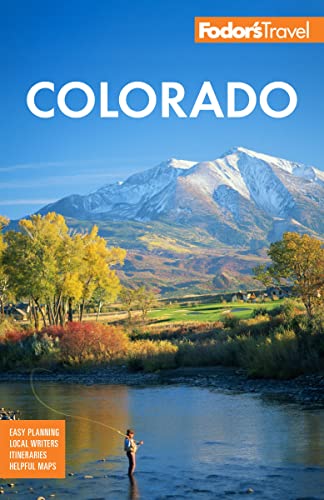Getting Here and Around
Air
Denver International Airport, known to locals as DIA (although its official airport code is DEN), 23 miles northeast of downtown Denver, is the primary commercial passenger airport serving north central Colorado. Boulder and Fort Collins have municipal airports but no commercial service.
Boulder is approximately 45 miles (45 minutes to 1 hour) from Denver International Airport; Fort Collins approximately 70 miles (just over an hour); and Estes Park is about 75 miles (or 1½ hours).
Transfers
Estes Park Shuttle (reservations essential) serves Estes Park and Rocky Mountain National Park from Denver, Denver International Airport, and Boulder. Groome Transportation serves Fort Collins and Boulder; Super Shuttle Express Ride Denver serves just the city.
Airport Contacts
Denver International Airport (DEN). 8500 Peña Blvd., Denver, Colorado, 80249. 303/342–2000; 800/247–2336; www.flydenver.com.
Airport Transfer Contacts
Estes Park Shuttle. Estes Park, Colorado. 970/586–5151; www.estesparkshuttle.com.
Groome Transportation. Colorado. 970/226--5533; 303/997--0238; www.groometransportation.com.
Super Shuttle Express Ride Denver. 800/258–3826; www.supershuttle.com.
Bus
The expansive network of the Regional Transportation District (RTD) includes service from Denver and Denver International Airport to and within Boulder, Lyons, Nederland, Longmont, and the Eldora Mountain Resort. The Hop bus (part of the RTD network) is a circulator that makes for easy carless travel within Boulder between the university, Boulder Junction, the Twenty Ninth Street shopping area, and the Pearl Street Mall.
Contacts
Regional Transportation District (RTD). Colorado. 303/299–6000; 800/366–7433; www.rtd-denver.com.
Car
Interstate 25, the most direct route from Denver to Fort Collins, is the north–south artery that connects the cities in the urban corridor along the Front Range. From Denver, U.S. 36 runs through Boulder, Lyons, and Estes Park to Rocky Mountain National Park. If you’re driving directly to Fort Collins or Estes Park and Rocky Mountain National Park from Denver International Airport, take the E–470 tollway to I–25. U.S. 36 between Boulder and Estes Park is heavily traveled, while Highways 119, 72, and 7 have much less traffic.
Gasoline and service are available in all larger towns and cities in the region. Bicyclists are common except on arteries; state law gives them the same rights and holds them to the same obligations as those using any other vehicle. Expect a fair amount of road construction along the northern Front Range; arterial routes, state highways, and city streets are being rebuilt to accommodate increasing traffic in the urban corridor. Although the state plows roads regularly, a winter snowstorm can slow traffic and create wet, slushy, or icy conditions. Note that you can’t always count on having cell-phone service in sparsely populated or mountainous areas.
Contacts
Colorado Department of Transportation Road Information. Colorado. 303/639–1111; www.codot.gov.
Colorado State Patrol. Colorado. 303/239--4501; *277; www.colorado.gov/csp.




